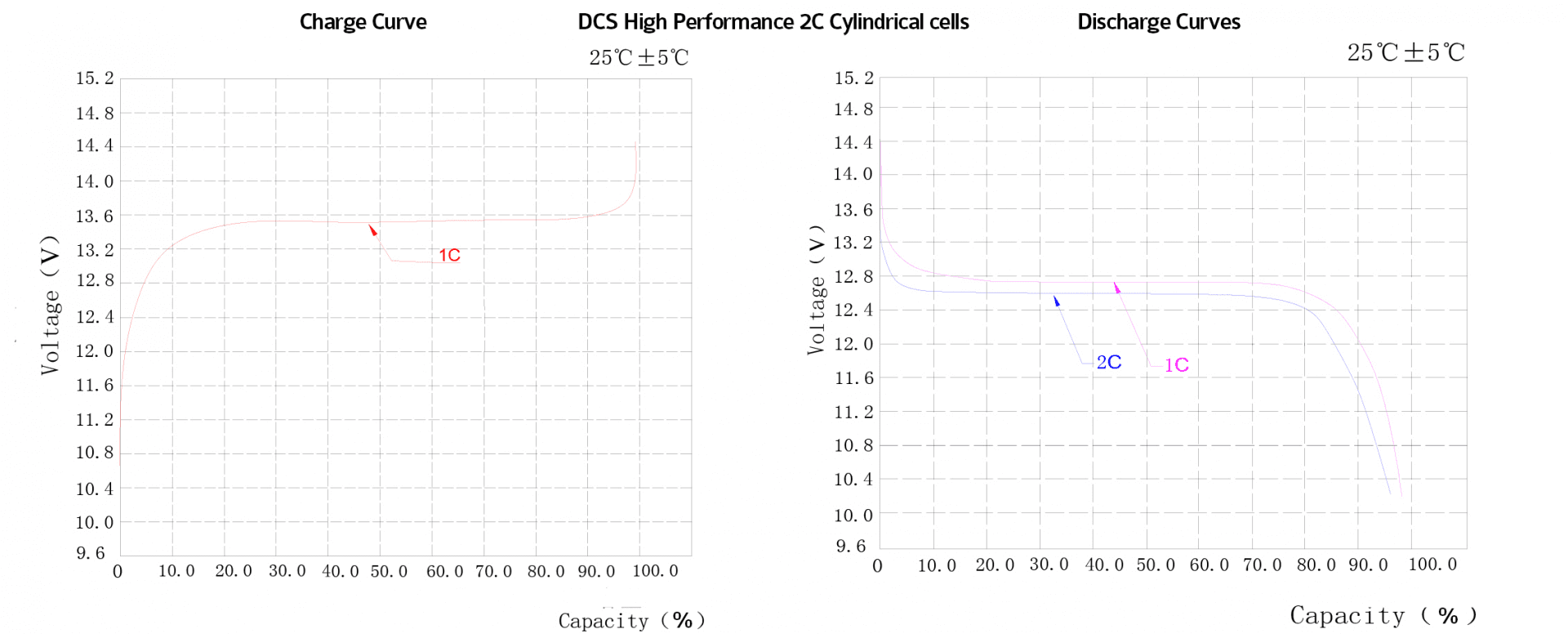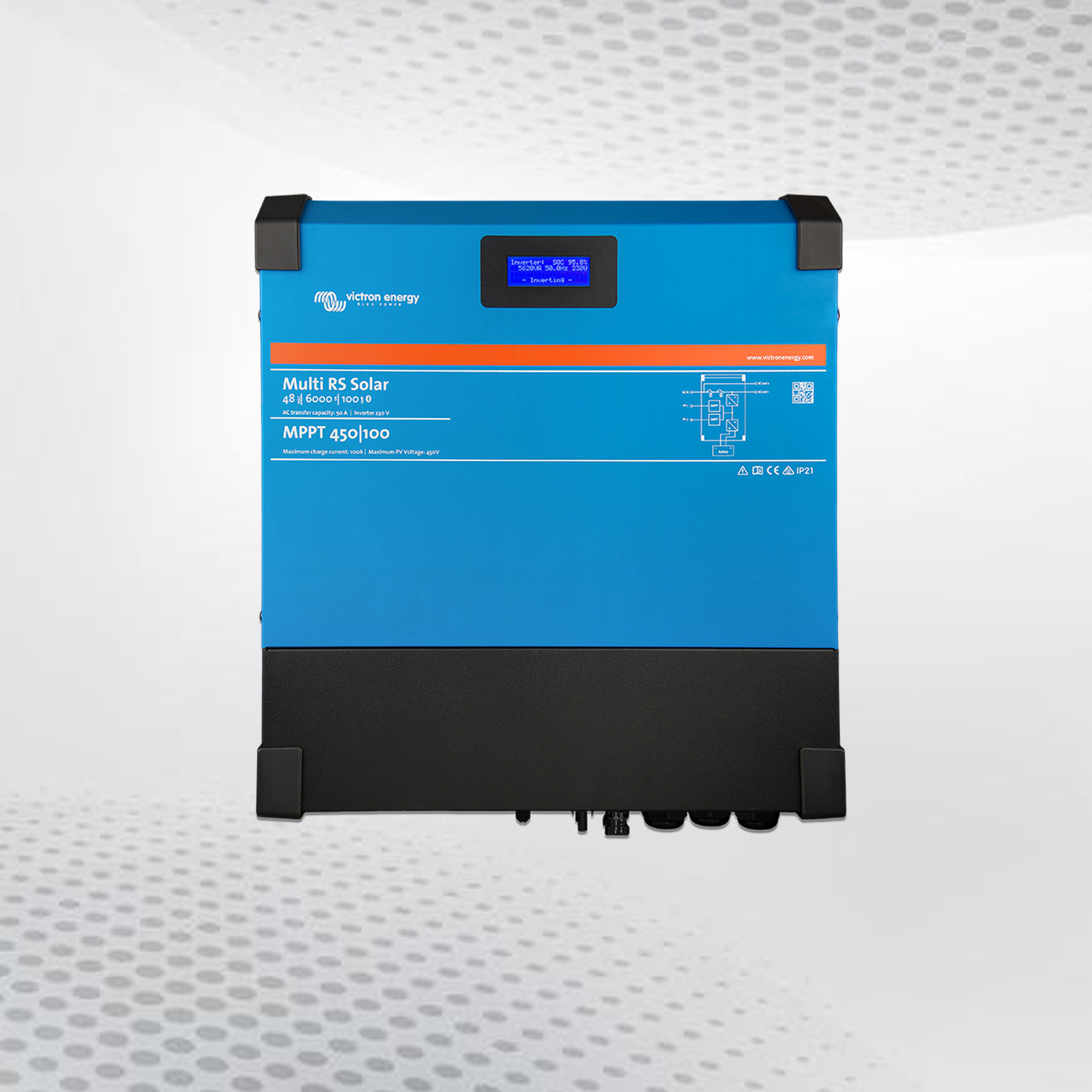12V 360Ah Off Grid System Specifications
- 360Ah DCS Lithium Batteries (2 x 180AH in parallel)
- 880W of Solar (2 x Trina 440W panels)
- Victron Phoenix Smart 2000W Inverter
- Victron BMV-712 Smart Battery Monitor
- 50A Victron MPPT Solar Charge Controller
- Tin roof mounting hardware
- Victron Battery Protect (Low battery voltage protection)
- Battery DC parallel cables
- 150A DC isolator for battery/inverter connection
- Inverter comes with battery leads
- 10m length of 4mm positive and negative solar cables with MC-4 connectors
$6,999.00
DCS 12V 180AH (LITHIUM)
DCS Batteries are the ideal replacement & upgrade from AGM, Gel or other lead-acid batteries for any application. DCS gives you the ability to upgrade your current batteries to lithium-ion technology that can deliver a minimum of 2500 cycles and has tremendous advantages in weight, performance, reliability and service life compared to traditional lead-acid batteries.
Trina 440W Panel
- Up to 440W, 21.9% module efficiency with high density interconnect technology
- Multi-busbar technology for better light trapping, lower series resistance, improved current collection and enhanced reliability
- Reduce installation cost with higher power bin and efficiency
- Boost performance in warm weather with low temperature coefficient and operating temperature
50A Victron MPPT Solar Regulator
- Latest and fastest technology
- Maximises the energy-harvest
- Achieves full charge in the shortest possible time
- Maintains battery health & extends its life
- Remote Monitoring and Control
- Day & night timing and light dimming option
- Flexible charge algorithm
- Gathers energy from your solar panels & stores it in your batteries
- External battery voltage and temperature sensing via built-in Bluetooth
Victron BMV-712 Smart Battery Monitor
- Bluetooth Smart
- Additional input
- Easy to Install
- Easy to configure with smart phone
- Shows remaining time at the current rate of discharge
Victron Phoenix Smart 2000W Inverter
Phoenix inverter smart is reliable and will last for years to come. Whether it is high temperature or overload, these inverters can withstand anything as they are protected against overheating and short circuits. Hence, you can be rest assured that they will last for years to come. A unique feature of Phoenix Inverter Smart is its extra start-up power. Whether you have to power up difficult loads such as computers or low power electric tools, Phoenix inverter can help you with anything with no hassle and fuss. In contrast, conventional high-frequency technology does not offer such extreme performance.
Battery Protect
- Programming made easy
- A special setting for Li-ion batteries
- Ultra-low current consumption
- Over voltage protection
- Ignition proof
- Delayed alarm output
- Delayed load disconnect
- Delayed reconnect
- The Battery Protect is not designed for reverse currents from charging sources
Blue Sea BS-7149B 187 Series Surface Mount Breaker 150A
This is the circuit breaker for the 360AH system.
- Combines switching and circuit protection into a single device
- Clear, single lever operation
- “Trip Free” design cannot be held “ON” during fault current condition
- Waterproof
- Recessed mounting holes for clean appearance
- Large Clearance around terminal studs accept heavy gauge wire lugs
- Robust 5/16 M8 terminals provide high torque connections
- Large lever with vertical/horizontal orientation provides indication of trip status
- Ignition protected – Safe for installation aboard gasoline powered boats
FAQ
Lithium Ferrophosphate (LFP) is a flame retardant, stable, safe and proven cell chemistry that has a very good energy density around 325 Wh/L. This cell chemistry can be engineered for various applications by adjusting the ratio of elements to provide high performance characteristics. E.g. the DCS marine battery range runs 2C cells, which means our little 75Ah battery will discharge comfortably at 75Ah x 2C = 150A. The DCS 80Ah Extreme runs 10C cells which means the 80A can comfortably discharge at 80Ah x 10C = 800A but is of course limited to lower currents due the the Battery Management System.
LFP also has very good cycling durability between 2,000 ~ 12,000 cycles can be achieved depending on how well the cells are managed, and the lowest rate of capacity loss (aka greater calendar-life) compared to other lithium cell chemistries.
Battery cells are simply a bunch of resistors with the ability to store energy. A 100Ah battery pack has a different resistance characteristic compared to a 50Ah battery pack, that theoretical difference in resistance is 2:1. So if you connect a 100Ah battery in parallel to a 50Ah battery there is no way for these two batteries to equalise and therefore you can’t charge them correctly. So for example connecting a 60Ah calcium starting battery to a 120Ah AGM via a VSR (Voltage Sensing Relay) you cannot charge both batteries correctly and from that day onwards you are prematurely destroying both battery packs. Same theory applies with lithium’s it’s still a battery pack.
What’s the solution? A DC-DC charger, you now have a permanent point of isolation (meaning that both batteries are never connected to each other in parallel). The DC-DC charger takes the surplus power from battery A (engine) and chargers battery B (aux/house). This device now allows any battery capacity and or chemistry to be used.
Yes you can, but lithium’s have a different voltage curve, so you would still need to use a programmable VSR to dial them in correctly. You would also need to ensure the batteries are programmed to never exceed a 10%SOC variance, any larger and you risk damaging the BMS's. These devices also draw a lot of power when engaged to so it’s best to run the two batteries in permanent parallel and run a load disconnect instead of a VSR.
Lithium battery cells have a super low resistance so are very easy to charge and very efficient. This level of efficiency means you can charge them at very high C rates. For example if you look at the charge rate of a 100Ah AGM battery the recommended charging current will be around 25A, which is a 0.25C charge rate. If you consider the DCS 12V 100Ah Lithium battery it can be charged at up to 70A which is a 0.70C charge rate. This means you no longer need to consider DC-DC chargers as you can connect our batteries directly to high power charging devices such as suitable alternators, or large buck boosters. For example our popular dual 90Ah battery system for boats and 4WD vehicles, can be connected to alternators up to 160A.
Because our batteries are internally voltage regulated and because our BMS has such a high sustainable peak discharge current they will do an amazing job of equalising very quickly.
The BMS will emergency open circuit the battery terminals to protect the cells. This means there is no longer any resistance in the system. The BMS needs a 12V supply with at least 1A of current to release and wakeup from a cell emergency protection state.
Most mains chargers with a lithium profile will do a slow recovery charge as will most solar regulators. Some chargers on the market today that are advertised as ‘lithium’ compatible still don’t have the firmware to do a slow recovery charge to release BMS’s. If you have a charger that will not wakeup the BMS, easiest way to wake it up is to connect a unregulated solar panel directly to the battery terminals, ensure all loads are disconnected before you do this. Having said that every system should have a suitable low cut off voltage to shutdown loads/accessories so that the batteries are not fully drained.
"Batteries cannot be left flat/empty, if the low voltage cutoff is triggered the battery pack should be fully charged as soon as possible. If access to a suitable charger is not possible, disconnect all loads from the battery terminals. The warranty will be void if the battery pack has been left in a low voltage cutoff state for longer than 14 days."
Most important thing is to isolate everything from the battery terminals, as cables/loads connected to the terminals causes more power drain as the FET gates have to remain closed to cull the accessory standby loads connected to the battery pack + offset BMS standby power consumption.
Use the following settings:
Charged voltage 14.0V
Tail current 4%
Charged detection time 1min
Peukert 1.05
Charge efficiency 98%
Current threshold 0.1A
C rates: refer to the battery pack capacity
Fully charge to 100% isolate everything from the terminals and leave for max 3 months and then cycle (fully discharge and fully charge) and leave again for 3 months etc…. Minimum 4 cycles per year to not effect the cells capacity.
The reason many factory batteries fall over after 9/12 months is because modern/smart alternators typically drop the alternators voltage output to 13.5/13.6V. This voltage is not high enough to charge wet/calcium/lead acid batteries so from the getgo they are destined to fail prematurely. They are typically under charged to around ~80%SOC at these voltages.
So what happens when DCS Hybrid batteries are connected to smart alternators? Exactly the same thing they get charged to around the same 80%SOC. However because LFP has no memory effect that's perfectly fine. By only charging to 80% you are further improving the service life of our batteries. It's no not necessary to charge our batteries over 80%SOC. The only advantage is that you give the BMS a chance to detect full charge voltage and calibrate the SOC readout. So try to plug into mains once a week to fully charge your batteries, especially if your not running any fixed solar supply.
All DCS 12V cylindrical cell packs can be charged as follows:
Bulk: 14.4V
Float: 13.5V
The DCS 12V 180Ah Auxiliary prismatic cell packs (SKU: DCS-12V-180Ah) need to be charged as follows:
Bulk: 14.2V
Float: 13.5V
When the battery pack is discharged down to 11.50V the BMS resets to 0%SOC and now is placed in a relearning state - the pack must be fully charged continuously without stopping to calibrate again. Charge it on a mains charger to 14.60V.
Depending on the usage pattern, best to fully cycle the batteries once every 3 months to give the cells a refresh. To fully cycle a 12V pack discharge to 11.50V and charge to 14.60V.
















